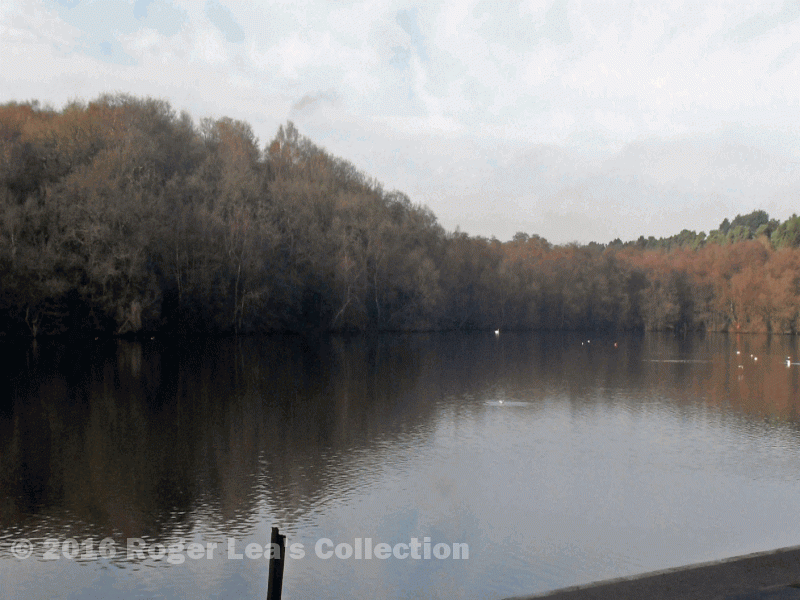The dam of Blackroot Pool in Sutton Park was completed in 1759. Lying as it did within Sutton Park, the corporation of Sutton, known as the Warden and Society, owned the site of the pool, but the pool really belonged to Joseph Duncumb of Moat House, who paid an annual rent of twopence to the Warden. Water from the pool was used to power a leather mill, but Duncumb’s main interest in the pool was recreational - pleasure parties on the water in summer, duck-shooting in winter, and fishing all the year round.
The next owner of Moat House, Duncumb’s son-in-law S.F.Steele Perkins, took out a new lease on the pool in 1802 treating it as part of his country estate - this was before the Town Gate entrance to the park was made, so access to the park was via Hartopp Gate. The tranquil Blackroot Pool was admired for its secluded and picturesque qualities - Sarah Holbeche, for example, liked to think of it as “my pool”.
William Steele Perkins inherited it in 1852, still paying a small annual rent, at a time when Sutton Park was becoming a popular place of resort for people from miles around. The number of visitors increased sharply with the opening of the railway line to Sutton in 1862, and on 19 August 1863, the Warden and Society resolved “that in order to increase the number and efficiency of the force for maintaining order in the Park and protecting the inhabitants and respectable visitors from the lawless portion of the excursionists the Corporation consider it necessary to impose a payment per head upon all persons entering the Park not being inhabitants”.
In 1862 a group of businessmen who had promoted the railway set up the Royal Hotel Company, speculating that Sutton would become a popular resort like Buxton or Leamington Spa, and would need a grand hotel to accommodate wealthy visitors. The Hotel Company leased Blackroot Pool from Steele Perkins, seeing it as a potential attraction for visitors, paying a rent of £80 per annum. Hearing of this, Miss Holbeche wrote in her diary “Alas for the spirit of “my pool”, gone forever”. The reaction of the Warden and Society was rather different; they paid Steele Perkins £210 to give up his lease, together with his boat and boathouse, so that they could let the pool at the higher rate. The hotel company failed, and in 1866 the Warden and Society advertised in the newspaper for a tenant, giving “preference to persons who intend to use it privately.”
Blackroot Pool was leased for seven years at £100 per annum to C.J.Phillips of the Wheat Sheaf Hotel, Birmingham. A guide to Sutton Park published in 1869 mentions Blackroot Pool as “the most beautiful of all the pools in the Park”, but also reports that “a large fleet of boats are kept on the pool”. In Eleizer Edwards’ 1880 guide Phillips is said to use the pool for boating and fishing, “In the summer the surface of the pool is crowded with gay and merry boating parties, while in quiet nooks, or over deep places, patient anglers ply their gentle art. One evening in 1875 the writer took seventeen bream which weighed 45 pounds.”
Phillips was still the proprietor in 1893, when he advertised his large fleet of boats and canoes and “fishing, with use of a punt, 2s. 6d (12½ p.)”. In 1944 income from boat hire (including on Wyndley Pool) amounted to £3189/8/2d, and the fleet consisted of three motor launches, one speed boat, 107 rowing boats and 27 children’s boats in addition to punts and canoes. Now the boats have all gone, and something of the spirit of tranquil scenic beauty which Miss Holbeche feared had gone for ever is revived.

